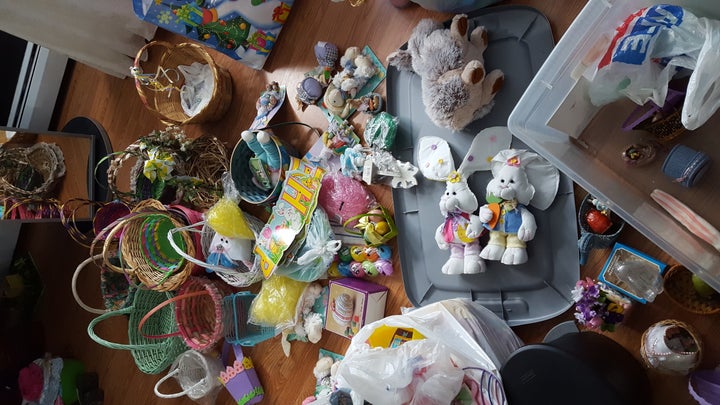
Before discovering Marie Kondo’s book The Life-Changing Magic of Tidying Up, I was a low-key hoarder.
I came by it honestly. Just like my sweet tooth and an affinity for monster movies, my hoarding tendencies were passed down to me by my grandmother.
Some of the earliest memories I have of my grandparents’ house involve their basement. Raised during the Great Depression, my grandmother developed a complicated relationship with having enough: enough to eat, enough to drink, enough to wear.
As an adult, she had my grandfather build shelves throughout their basement, and she spent her days stocking them with everything from canned goods to lightbulbs.
My grandmother was also a passionate shopper. It didn’t matter what she was shopping for. A quick run to Rite Aid held just as much promise as an entire day spent roaming the outlets with her sister-in-law. Mail-order catalogs piled up on the coffee table next to her armchair at home; a shopping spree was always within reach.
She passed her love of shopping down through the generations. My mother inherited it. I inherited it, too. For me, there was nothing quite like the excitement of trying on a $5 shirt from the 75 percent off clothing rack at Target while daydreaming about the future.
The dark blue button-down satin top I would wear while sitting my boss down to ask for a raise.
The knee-length polka-dot skirt with ruffles I’d have on as I sat around a high-top table, laughing with my friends at our favorite bar.
I lived parallel lives while I shopped. The Lauren who was trying on marked-down clothes in the dressing room advanced her career and went on dates. She was nothing like the old Laurens hanging up in the closet at home, the Lauren who traded following her dreams for a steady paycheck working in the mortgage industry. The Lauren who was still reeling from the abrupt ending of her very short marriage. No, this Lauren would be different, better, happier.
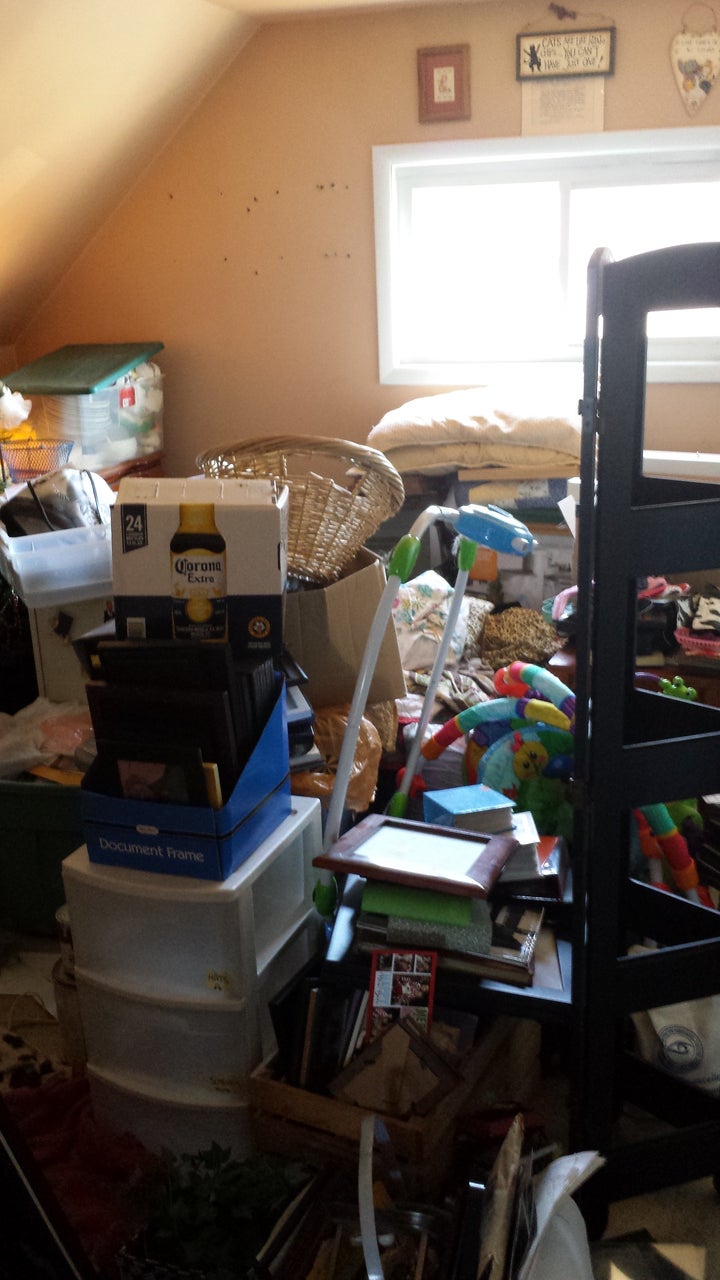
That promise of being transformed by something new didn’t just come from shopping. I could find it in almost anything, as long as it was new to me: my aunt and uncle’s old dining room set, a collection of lighthouse dinner plates from my mother’s co-worker, and even the straight-outta-the-’80s coffee tables I salvaged from the trash.
Each of those things offered the promise of a different life. With a larger dining room set, maybe I’d have more company over. With enough plates, maybe I could host a dinner party. I could change my life if I could just fill it with the right combination of stuff.
Of course, there was no right combination of stuff. There wasn’t any one thing that could heal my broken heart or change the fact that I hated my job. I just needed time, patience and, as it turned out, a touch of dumb luck for everything in my life to turn around.
I met my future husband in 2010. I was newly divorced and desperately needed some time and some space, both of which he gladly gave me. We took things very slowly, dating for a few years before eventually moving in together.
When we finally did it, he brought his stuff with him. A few years later, we had our first child together, and she came with stuff, too. Suddenly, our shared home was bursting with even more stuff than I’d had before. And instead of feeling like it held the promise of something new, it had begun to feel like an albatross around my neck.
I happened upon Marie Kondo’s book The Life-Changing Magic of Tidying Up purely by accident. Or maybe it was divine intervention. Either way, it came into my life at the exact moment I needed it to. The book opened my eyes to my relationship with stuff. I realized I had been treating the stuff that came into my home as a lifeline, when in fact it had become a weight pulling me under.
Kondo calls her decluttering method KonMari. To successfully KonMari your home, you need to tackle all of your stuff by category. You begin with your clothing, taking everything you own out of your closets and drawers. Seeing just how much of each thing you have is sobering. The clothes, the shoes, the coffee mugs. It feels gluttonous.
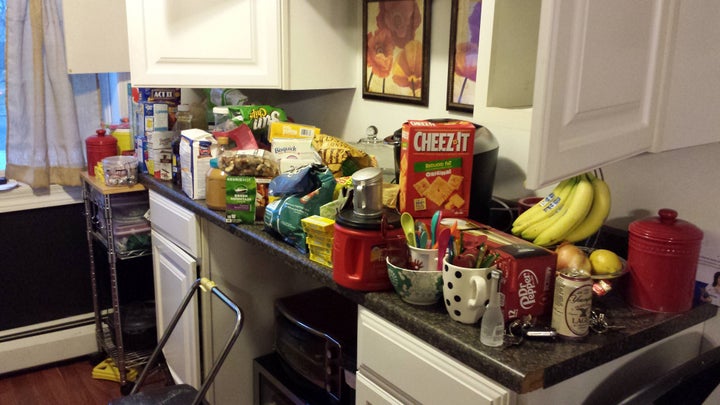
Once you have everything together, you go through it to decide what stays and what goes. The items that “spark joy” live to see another day. The ones that don’t are thanked and then removed from your home. It took me a few months to fully complete all the categories, but I felt the benefits immediately.
It was freeing! I was free! And best of all, suddenly my stuff had become, well, just stuff.
I continued to follow the KonMari method in the years that followed. I stopped my wishful shopping. My underwear, against all odds, remained perfectly rolled in my drawer. Everything we kept had a place and a purpose.
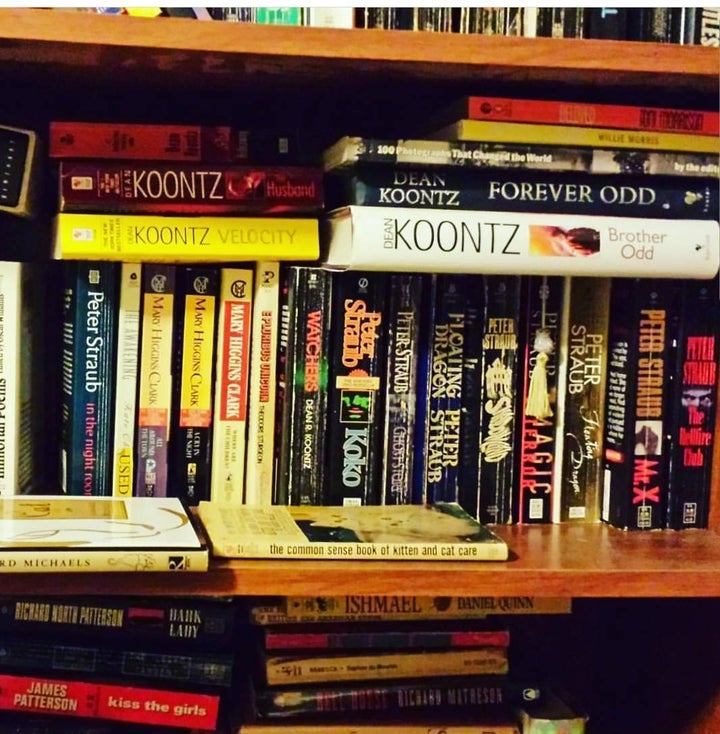
While I decluttered, my grandmother also downsized. After my grandfather’s death, she moved into my old room at my parent’s house. Her health fluctuated for a few years, until she experienced a sudden decline that left her in need of additional care during the day while my parents were at work.
I had just given birth and didn’t plan to return to work immediately, putting me in the perfect position to step in as caregiver. When my mother’s job later called her north, we decided that my family would move into my parent’s home so I could provide full-time care. I spent two years as my grandmother’s caregiver, and they were two of the hardest and most rewarding years of my life.
My grandmother was sound asleep in my old bedroom when she took her final breath. Her most prized possession, a collection of ”Gone With the Wind” plates, hung on the walls above her. I like to think that she spent her final moments pleasantly lost in those plates, strolling through the scenery with Rhett Butler on one arm and my grandfather on the other.
My entire life changed that day. Gone was my ever-growing to-do list. Our home, once bustling with visiting nurses and the constant hum of an oxygen concentrator, suddenly felt silent and empty by comparison.
Her absence hit me in waves. It radiated out of her bedroom, off her spot on the couch where she watched daytime TV and from her unoccupied chair at the dinner table. I was eight months pregnant and desperate for something to fill the emptiness that was growing inside me.
A few days after her funeral, our family gathered in her room to go through her things. We each started our own pile of things that we wanted to keep. Throughout the day I watched as everyone else’s piles grew while mine remained the same.
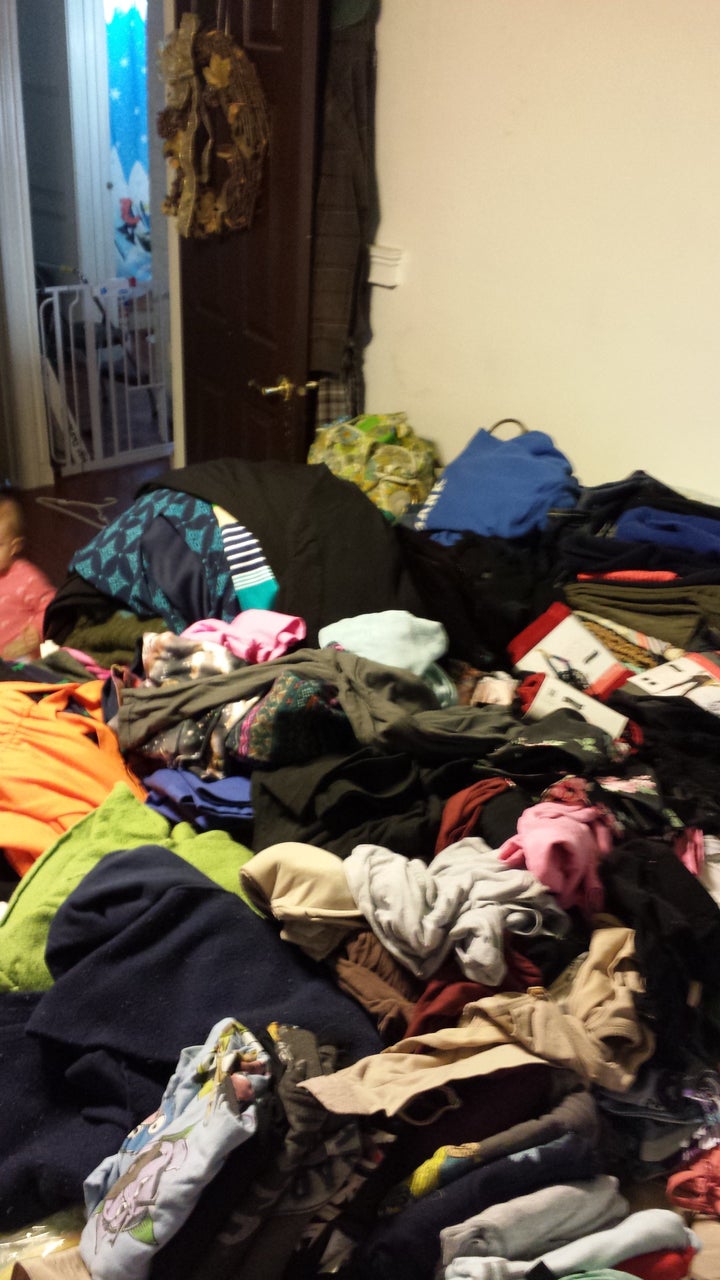
Thanks to the KonMari method, I had gotten so good at recognizing stuff when I saw it, that I was unable to feel a connection with someone else’s things, and it hurt. I wanted to want her stuff ― her broken watch or a bottle of her favorite perfume ― but I just didn’t feel it. Regret crept into my bones as I saw everyone else finding brief moments of peace in the things she left behind.
I took some stuff for my daughters to remember her by and then saw the rest boxed up and put out on the curb for donation. There were comments from my aunt as she loaded some of her mother’s things into her car, that my decision process seemed too cold and unfeeling. I understood where she was coming from, but I just couldn’t manage to find it in myself to fake excitement over anything. It would have been easier if I had lied and said I just didn’t have space for any of it, but that wasn’t true. I didn’t want any of it.
As time went on, my grief seemed to stretch and twist itself into different shapes. I found it hard to adjust to this new life where my days seemed empty and endless. And where I could once deal with a bad day by wandering the sale racks at Target, now I was at a loss when it came to digging myself out of an emotional black hole. My daughter was born a short time later and I sunk into a deep depression. Even with the new baby in our home, something was missing. I found myself unable to climb out of the sadness, something my doctor later diagnosed as postpartum depression.
I don’t blame the book or the process for any of this because it truly did change my life. I blame myself. I regret not spending more time reflecting on why I had allowed so much of my emotional energy to be tied up in stuff. The book helped me to treat the symptom, but it didn’t cure the underlying issue. I had lived my life using material things to try to fill a void inside of me instead of actually examining why I felt so empty in the first place.
I didn’t want to believe that my career was making me miserable, that the end of my marriage had made me lonely, that my grandmother’s death had destroyed me. No, I was a strong independent woman with a good life. I couldn’t possibly be unhappy when I had so much going for me. So I shopped, I acquired, I accumulated. I chased the high that came along with the promise of something being different.
“Tidying up” made the problem look better on the outside, but I had to figure out that I was fundamentally unhappy with my life and take steps to change it, to fix what was happening on the inside.
I’m happy to say that these days I have a whole host of coping mechanisms to turn to when I start to feel unhappy or empty that don’t involve stuff (eating raw cookie dough during late-night Netflix binges is at the top of the list). I now know there’s no one thing that can fill me up or change my life.
In the two years since my grandmother died, I have discovered how to manufacture my own joy.
Do you have a personal story you’d like to see published on HuffPost? Find out what we’re looking for here and send us a pitch!
